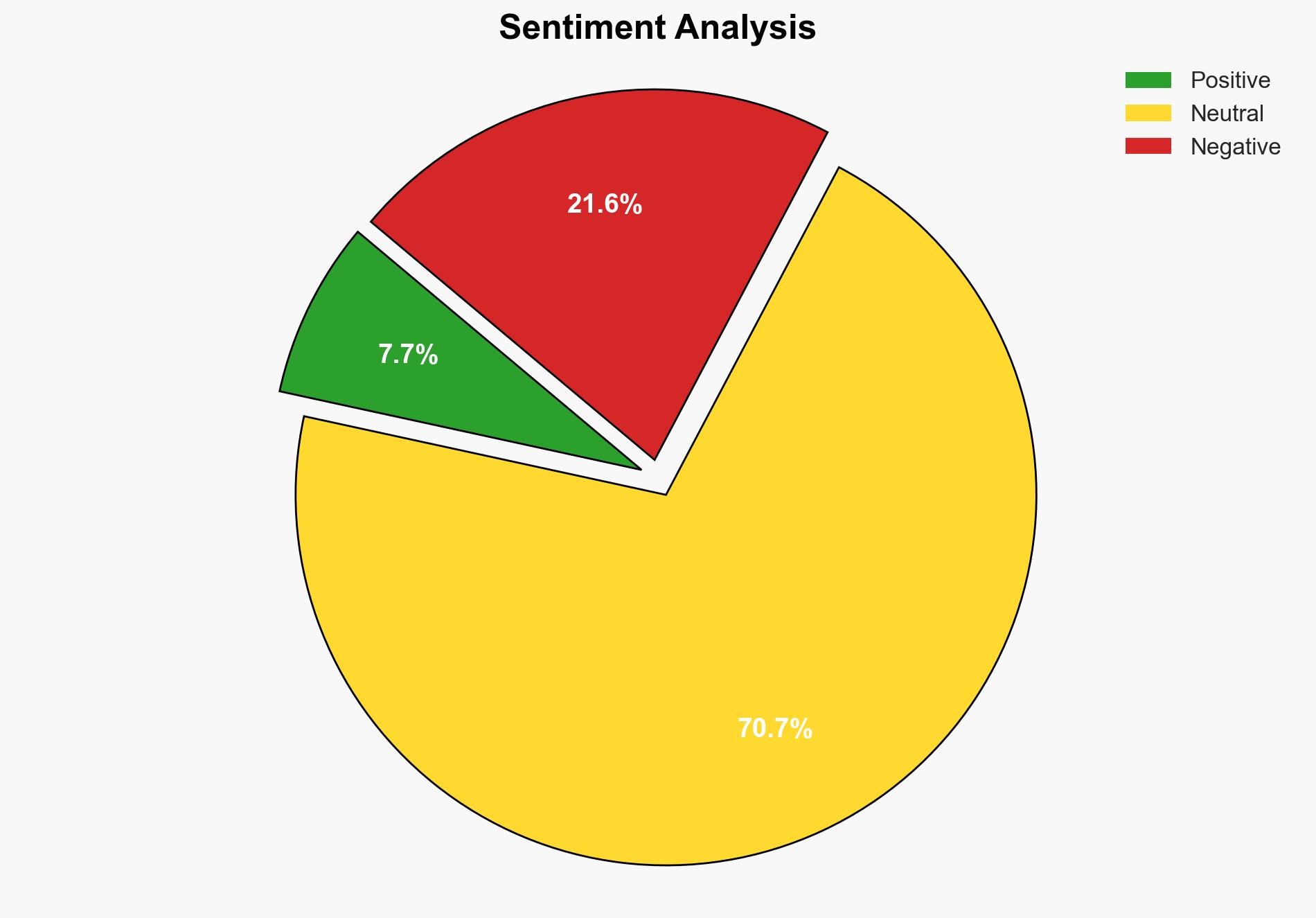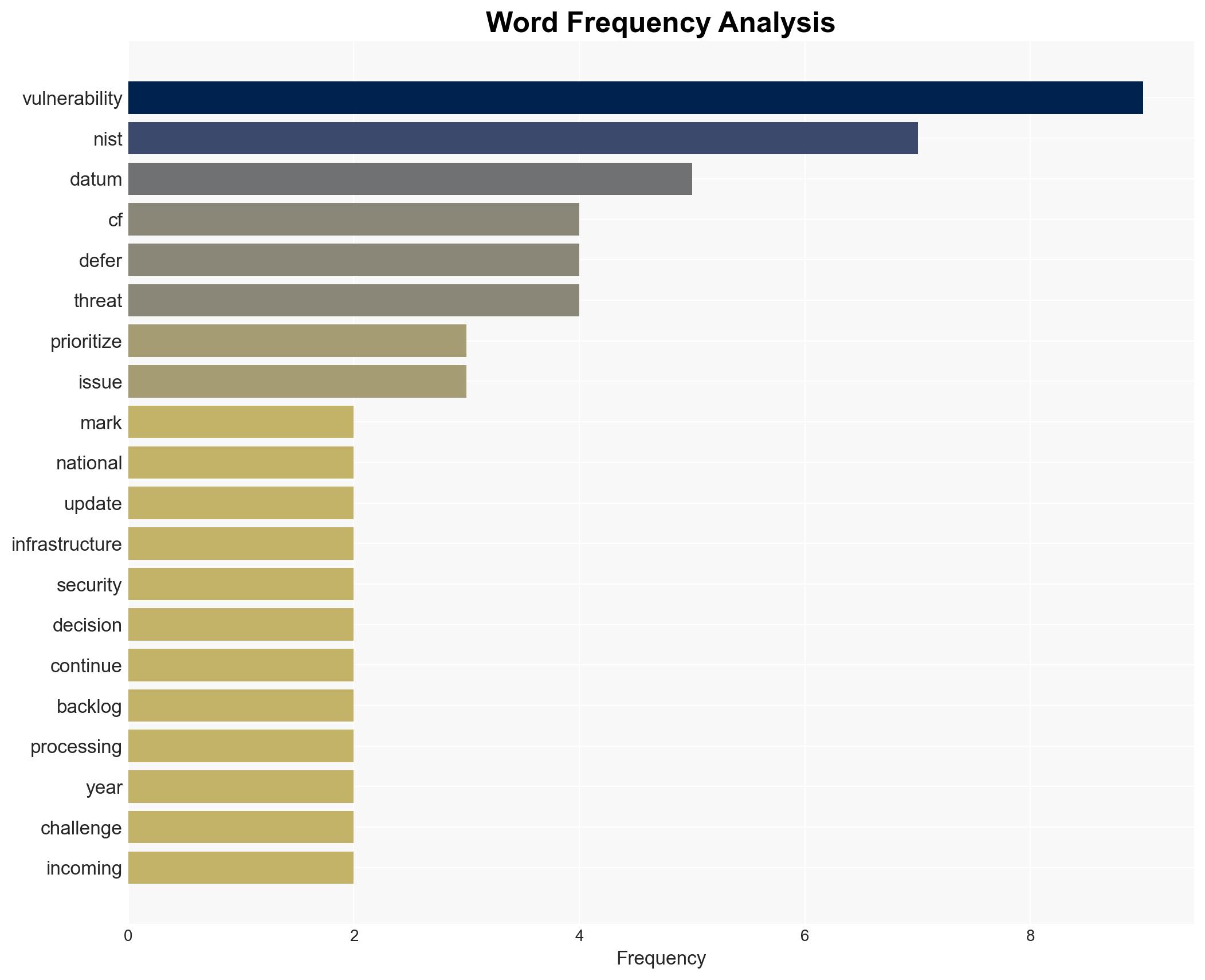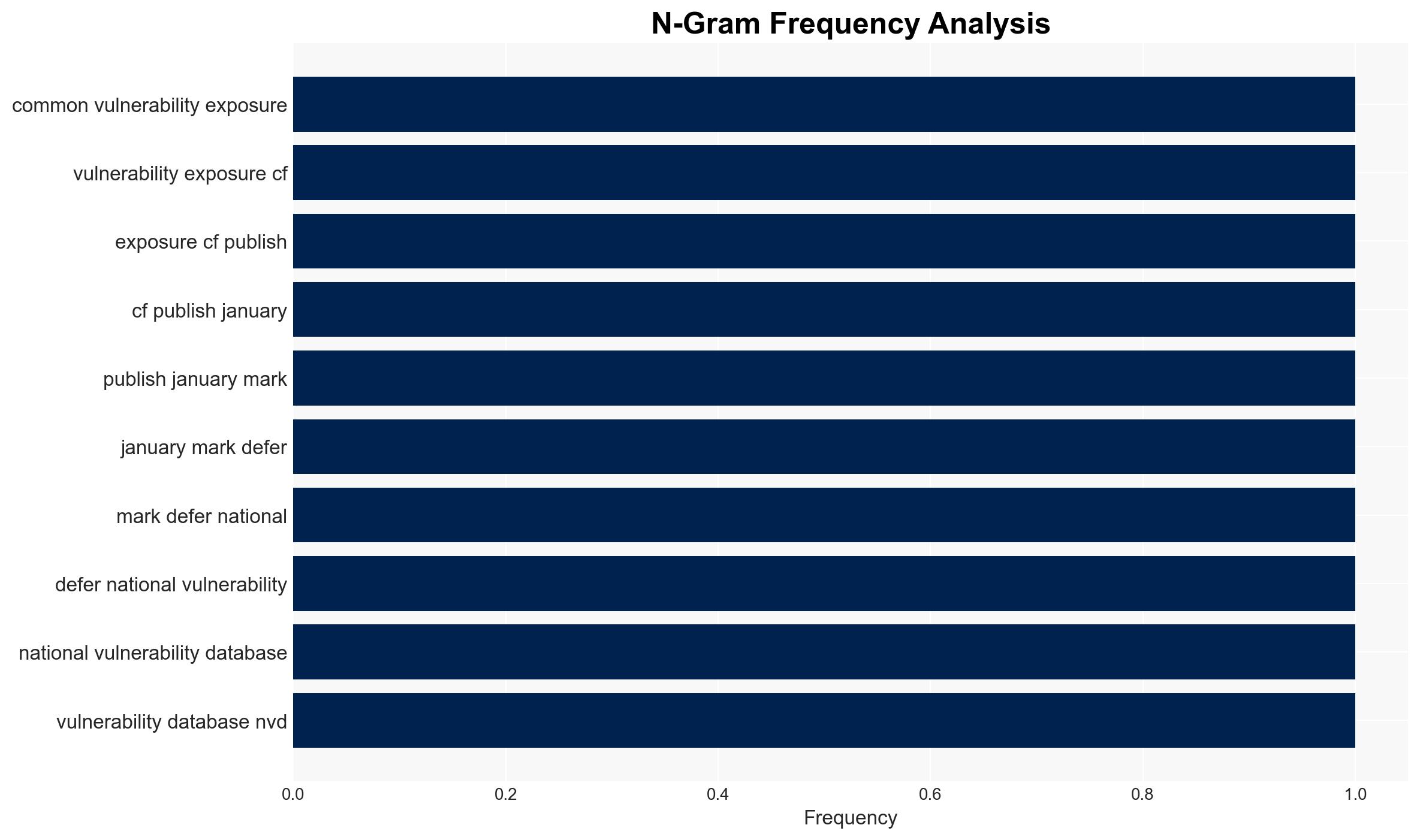NIST Defers Pre-2018 CVEs to Tackle Growing Vulnerability Backlog – Infosecurity Magazine
Published on: 2025-04-08
Intelligence Report: NIST Defers Pre-2018 CVEs to Tackle Growing Vulnerability Backlog – Infosecurity Magazine
1. BLUF (Bottom Line Up Front)
The National Institute of Standards and Technology (NIST) has decided to defer the processing of pre-2018 Common Vulnerabilities and Exposures (CVEs) to address a growing backlog of vulnerability data. This strategic move aims to prioritize the enrichment and updating of current vulnerabilities, particularly those listed in the Known Exploited Vulnerabilities (KEV) catalog. The decision reflects a reprioritization of resources to manage emerging threats more effectively, while legacy vulnerabilities will require organizational security teams to take proactive measures.
2. Detailed Analysis
The following structured analytic techniques have been applied for this analysis:
General Analysis
NIST’s decision to defer older CVEs is a response to an unprecedented surge in vulnerability submissions, which has overwhelmed its processing capabilities. The backlog has been exacerbated by challenges in efficiently importing and enriching incoming data. NIST is developing new systems to streamline this process, potentially incorporating artificial intelligence and machine learning technologies. While the deferral allows NIST to focus on more immediate threats, it places the onus on organizations to manage legacy vulnerabilities through routine patch management and infrastructure hardening.
3. Implications and Strategic Risks
The deferral of pre-2018 CVEs poses several risks:
- National Security: Unaddressed legacy vulnerabilities may be exploited by adversaries, posing threats to critical infrastructure.
- Economic Interests: Organizations may face increased costs related to cyber incidents stemming from unpatched vulnerabilities.
- Regional Stability: Cyber threats exploiting deferred vulnerabilities could destabilize regional networks and systems.
The trend of increasing vulnerability submissions highlights the need for enhanced data processing capabilities and strategic prioritization.
4. Recommendations and Outlook
Recommendations:
- Organizations should implement robust patch management practices to address deferred vulnerabilities.
- Invest in AI and machine learning technologies to enhance vulnerability data processing capabilities.
- Regulatory bodies should consider guidelines to ensure timely patching of legacy systems.
Outlook:
Best-case scenario: NIST successfully implements new systems, reducing the backlog and enhancing vulnerability management efficiency.
Worst-case scenario: Continued backlog leads to increased exploitation of unaddressed vulnerabilities, resulting in significant cyber incidents.
Most likely scenario: Incremental improvements in processing capabilities, with organizations shouldering the responsibility for legacy vulnerability management.
5. Key Individuals and Entities
The report mentions significant individuals such as Ken Dunham and Jason Soroko, as well as organizations like Qualys and Sectigo, highlighting their perspectives on the strategic shifts in vulnerability management.




